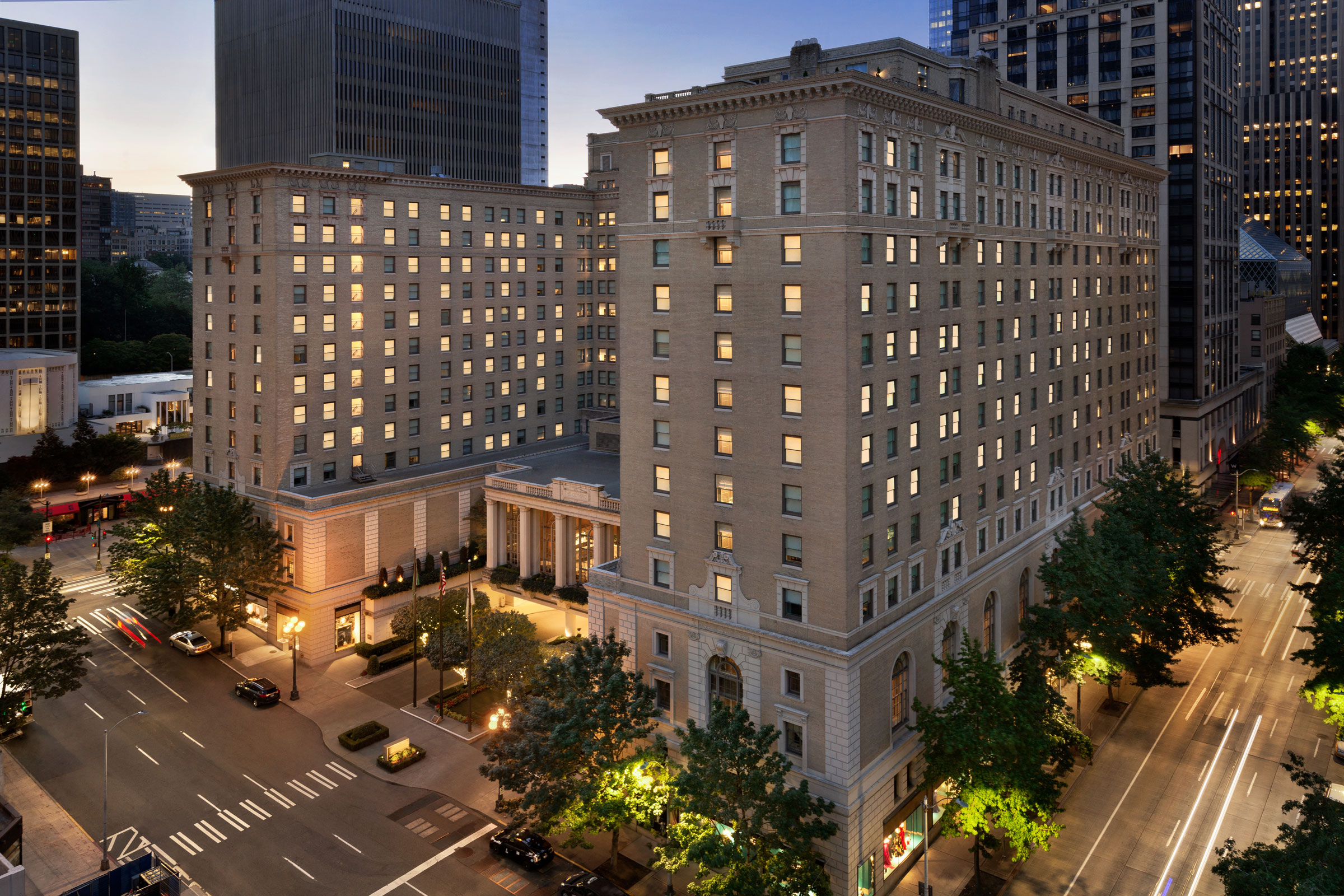Story at a glance:
- Touchless entry, zero food waste, energy-efficient lighting—hotels the world over are finding more and more ways to be sustainable.
- Hotel designers are also finding more ways to incorporate recycled materials and develop more carbon neutral designs.
- The top sustainable hotels don’t sacrifice luxury in favor of being environmentally friendly; they achieve both.
Hotels, inns, and lodging all over the world are incorporating more sustainable features at every turn.
From Pittsburgh to Portugal and Austin to the Arctic, hotel design teams are finding ways to incorporate more energy-efficient technology, reduce waste, and minimize their overall carbon footprint.
We travel the globe to find the most interesting sustainable hotels. With the sustainable tourism industry booming, these are some of our favorite sustainable hotels for 2025.
1. Fairmont Olympic Hotel, Seattle
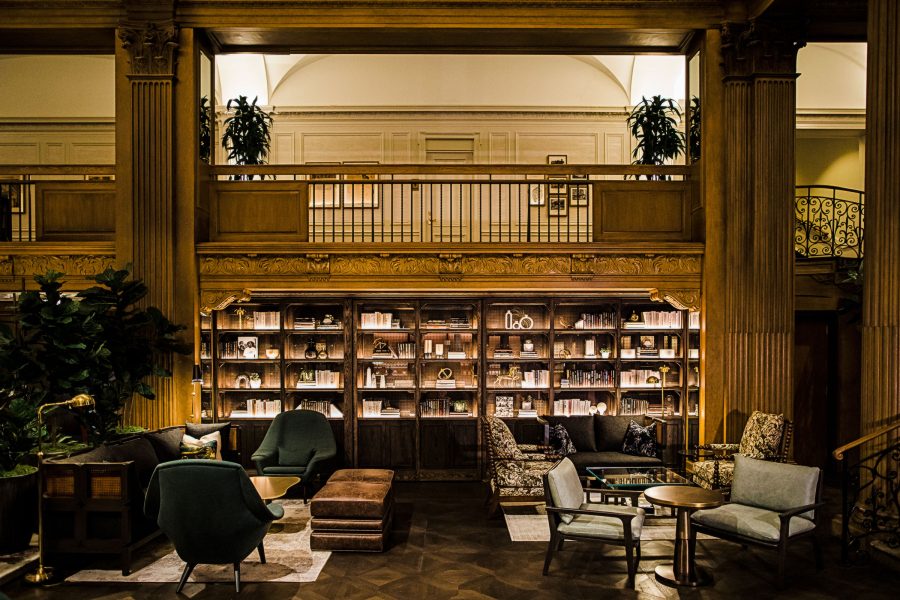
Photo courtesy of Fairmont Olympic Hotel
The century-old Fairmont Olympic Hotel’s most recent renovations helped revive the inside lobby as the design team reimagined the space with two new bars (Founders Club and Olympic Bar) and updated the famous Georgian Room to The George—keeping the shell intact. Wood details throughout the property are original, and the renovation also unveiled original terrazzo flooring under decades-old carpeting.
From the moment you enter the hotel lobby, you feel welcome. “The lobby is the heart and soul of the hotel,” says Sunny Joseph, general manager of the Fairmont Olympic Hotel in Seattle.
“The task given was how do we ensure we respect the past but look ahead to the future as well? How do we ensure whatever design we select is going to incorporate the best of both worlds? That we will talk to the audience of the past plus the audience and the guests of our future?”
2. Solar Branco, São Miguel, The Azores
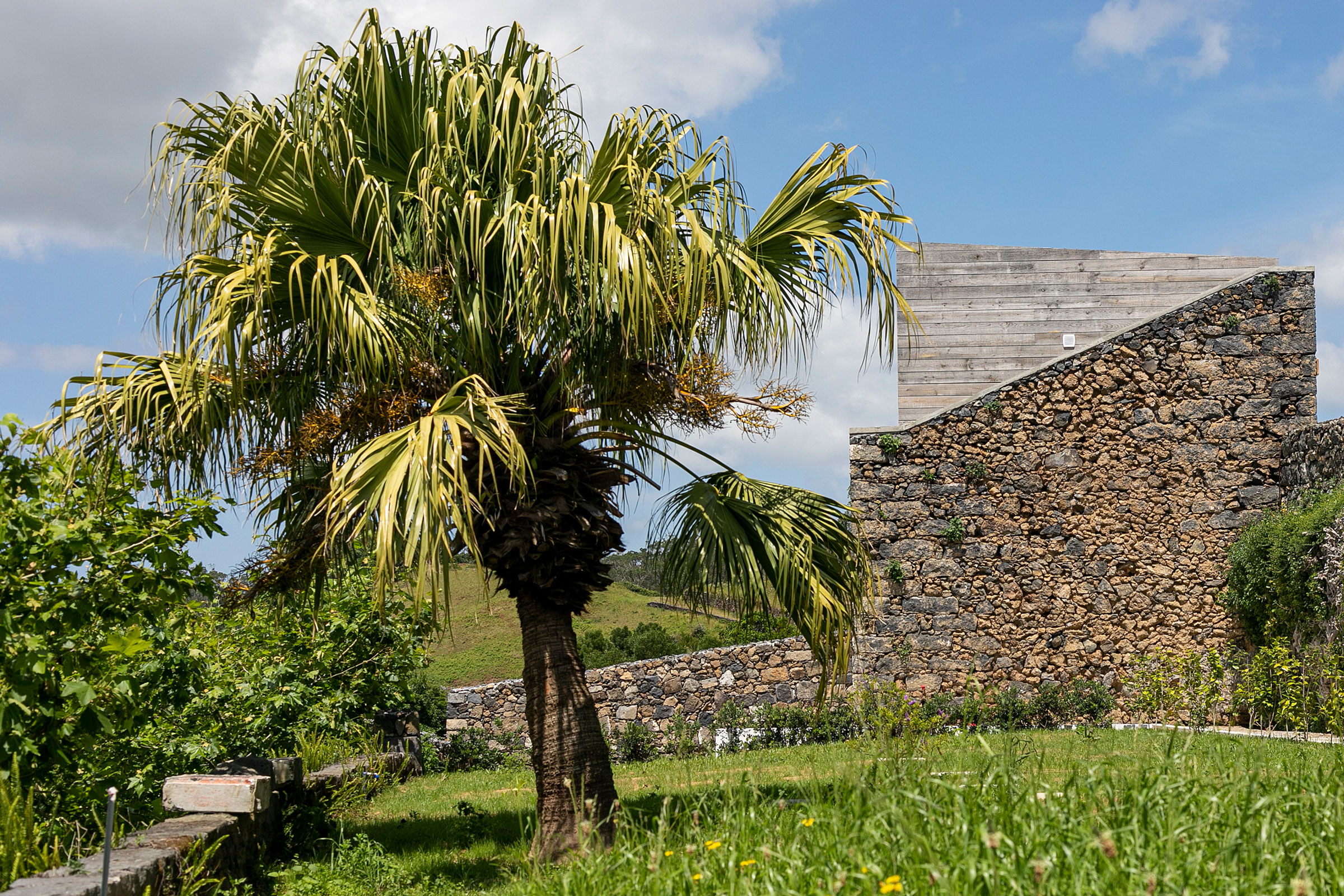
A side view of The Ruin at the Solar Branco Eco Estate. Photo by Rui Soares
Solar Branco Eco Estate on São Miguel Island has been a labor of love. Now with eight eco-friendly suites and cottages, the property was long neglected before becoming a spot for weary travelers with a love of sustainability and the finer things in life to rest their heads.
The hotel produces zero food waste, runs largely on solar, and educates guests about how they can make a difference environmentally.
The evolving adaptive reuse project officially opened to visitors in summer 2023 and dates back to the 19th century. Accommodations include The Ruin, a two-story cottage that was an abandoned farm building for decades before being brought back to life as part of Solar Branco. “We wanted to take something that was old and crumbling and restore it to something beautiful and comfortable,” says co-owner Caroline Sprod.
3. Hotel Magdalena, Austin, Texas
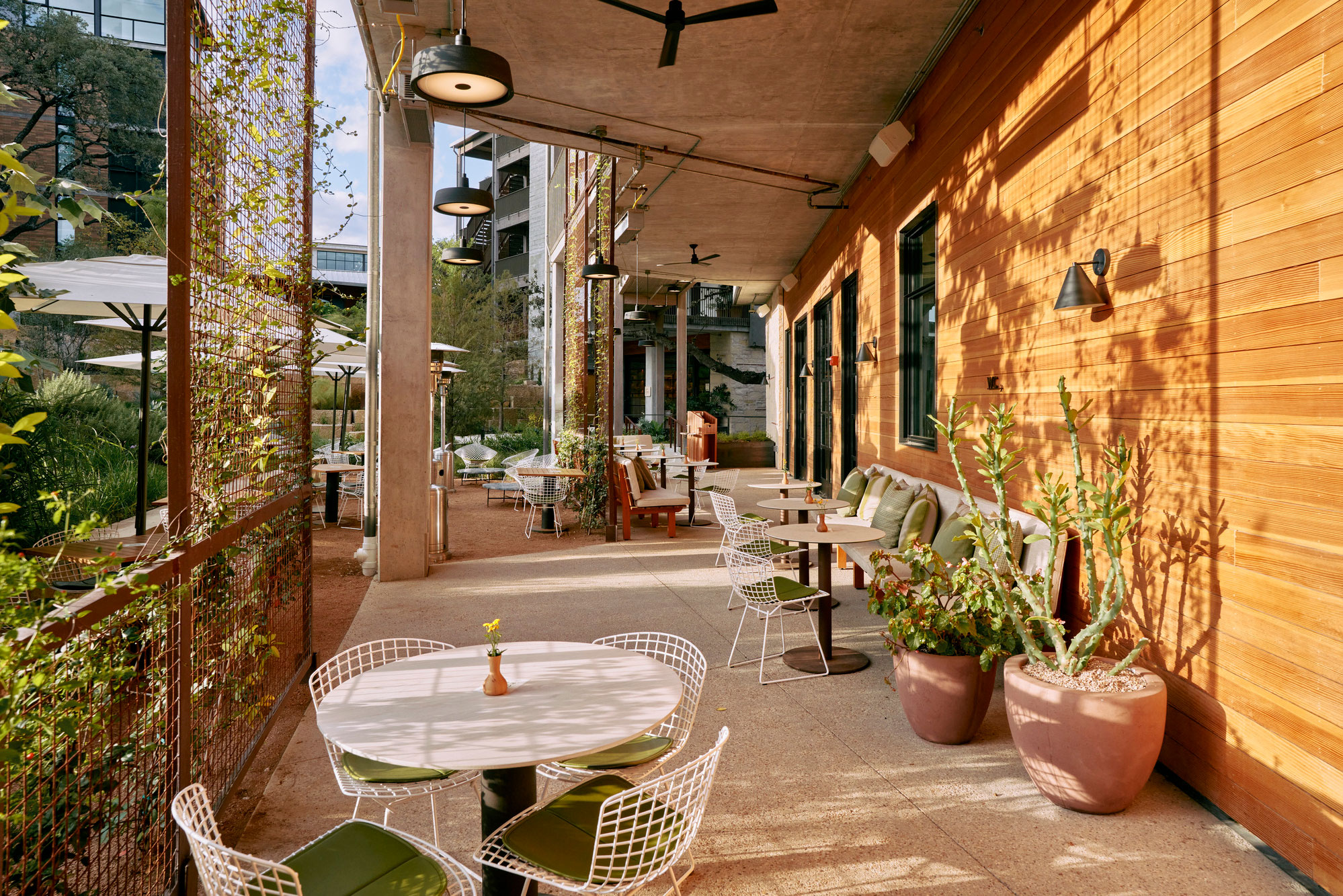
Photo by Nick Simonite
Hotel Magdalena is the first boutique mass timber hotel in North America. Lake|Flato and Austin-based hotel operator Bunkhouse designed the five-building complex around existing Live Oak heritage trees, which became focal points for outdoor gathering spaces and private suite gardens in Magdalena’s expansive courtyards. They worked with top manufacturer Think Wood, who provides commercial, multifamily, and single-family home design and build resources, to bring the project to life.
Exposed timber walkways canopy the outdoor corridors and extend into guest rooms. This marriage between interior and exterior spaces is augmented by scenic landscaping from Ten Eyck Landscape Architects that bridges visitors’ experience through flowing, organic greenery. Hotel occupants access their rooms via spanning outdoor wooden porches, encouraging occupants to spend time outdoors and engage with other hotel guests at a safe distance.
4. Isfjord Radio Adventure Hotel

Isfjord Radio has been adapted to offer modern lodging in a remote setting. Photo courtesy of Basecamp Explorer
The Isfjord Radio property is home to an adventure hotel for Arctic explorers, part of an evolving effort of sustainable tourism on Svalbard.
Initially a radio station, the property opened in 1933 as a crucial connection from Svalbard to the outside world. The station was destroyed by both sides during World War II and rebuilt in 1946 (you can still see craters from the war onsite). The central buildings at Isfjord Radio were built in the 1950s, with additional structures added later.
Today Basecamp Explorer runs the Isfjord Radio Adventure Hotel. While it may look rustic from the outside, inside has all the comforts of any modern hotel, including a warm dinner with optional wine pairings. Just steps from the hotel, a sauna overlooking the water is an added bonus—guests just have to remember to take a guide carrying a rifle with them when they go, as polar bears also roam the land.
5. Industrialist Hotel, Pittsburgh
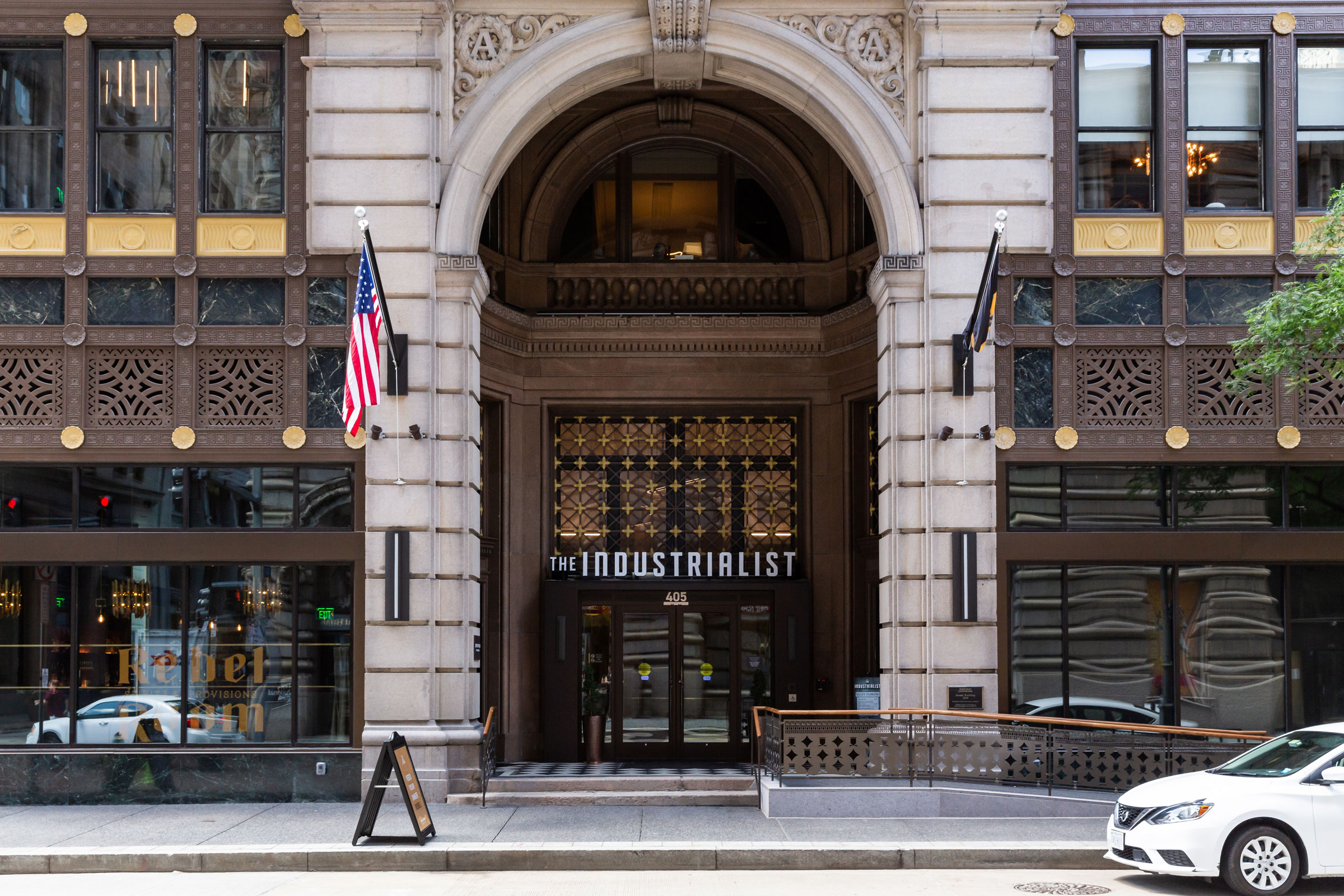
The Industrialist Hotel’s historic facade holds rich architectural details, including a Cornice crown with howling masks and a brick and terra-cotta–striped facade on a granite base. The design team completed significant restoration work at the building’s cornice, repairing and replacing structural steel that had been compromised by water infiltration. Photo by Digital Love Studios
The Industrialist dates back to 1902. The building—walking distance to where the three rivers meet in Pittsburgh—was originally designed by architect Frederick Osterling. Desmone Architects and Stonewall Taylor recently gave the beautiful property new life. The now 124-room hotel is stunning, seamlessly blending old and new across three floors of public spaces as well as all guestrooms and suites. Historic finishes and features were preserved throughout the project, and the first floor lobby is almost entirely original.
“The greenest building is the one that already exists,” says Kirsten Vaselaar, senior vice president of real estate and development at HRI Properties. “By giving the building a new use, bringing it up to code, upgrading all of the building systems, repairing the exterior envelope as needed, and installing a new roof, the project has helped ensure that this building can continue to perform, serve an economic purpose, and contribute to the community for many years to come.”
6. Scandic Vulkan Hotel, Oslo

Photo by Finn Ståle Feldberg
The Scandic Vulkan Hotel—Norway’s first Energy Class A hotel—is one of the many ways the city of Oslo is revitalizing its Vulkan area near the hip, bustling Grunerlokka neighborhood. Heating and cooling at the hotel is provided by a system of geothermal wells that runs nearly 1,000 feet deep supplies all of Vulkan’s buildings with heating and cooling.
“We decided very early on that working with sustainability, energy, and environmental issues was going to be core to this project,” says Sverre Landmark, commercial director for Aspelin Ramm, a leading developer in Oslo.
The Scandic Vulkan Hotel is also fitted with state-of-the-art insulation, and it recycles energy from coolers and elevators.
7. citizenM Hotel, Seattle
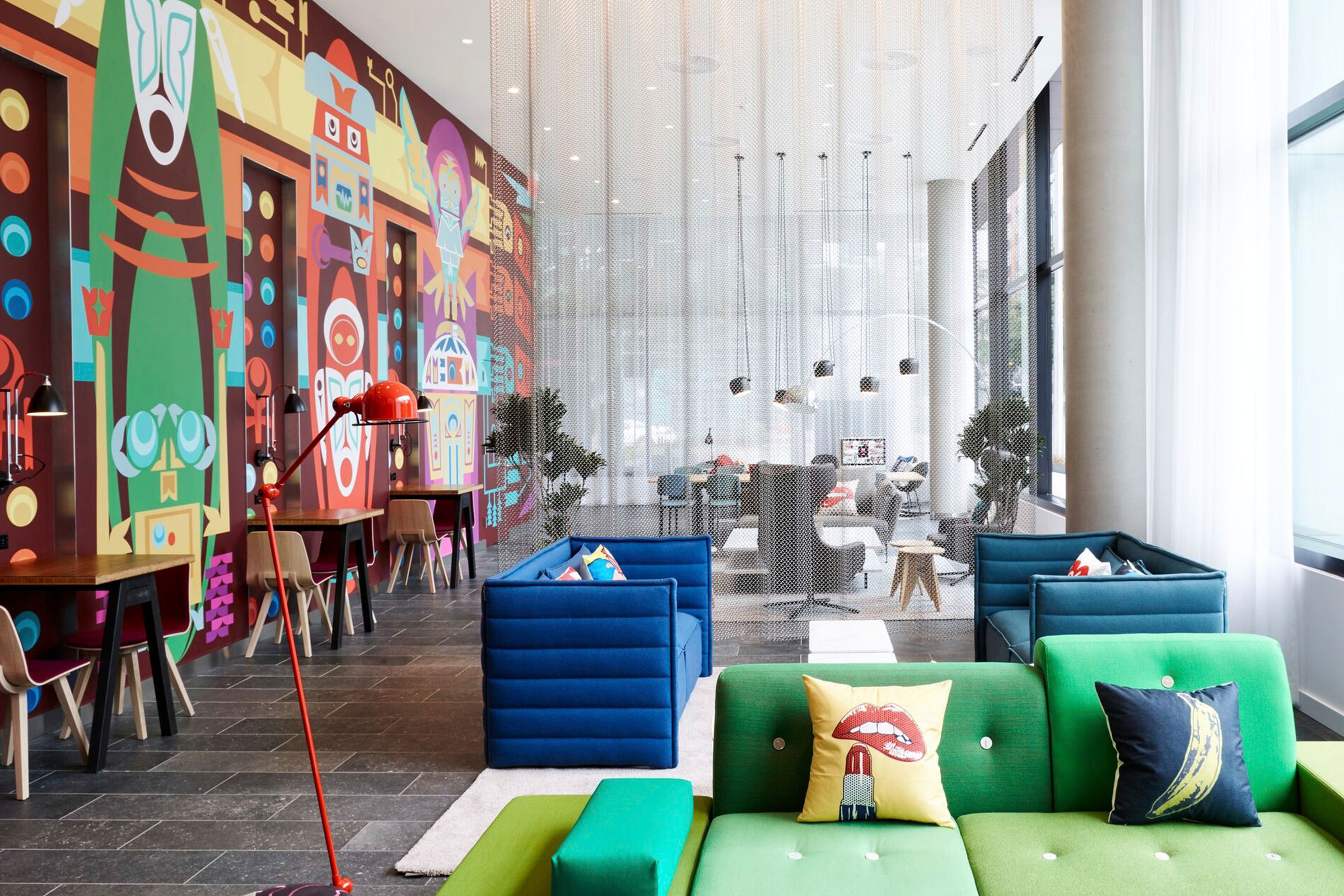
Bright colors and plentiful natural light are consistent throughout this Gensler-designed citizenM hotel. Photo by Richard Powers
The citizenM hotel in Seattle took four months less to build than a traditional building project, with 60% less construction waste. The Gensler-designed project was built using modular construction. Manufacturing the units in a factory setting has a myriad of benefits from an environmental perspective; where the average building will involve shipping more materials than needed to any given site, the excess of which will need to be disposed of, a factory is able to aggregate materials and distribute them between projects as well as plan out what’s needed precisely, so waste is minimized.
The shorter timeframe and fewer deliveries also contributed to less pollution. The project ultimately earned LEED Gold and uses 29% less energy than it would otherwise.
8. Islas Secas, Gulf of Chiriqui, Panama
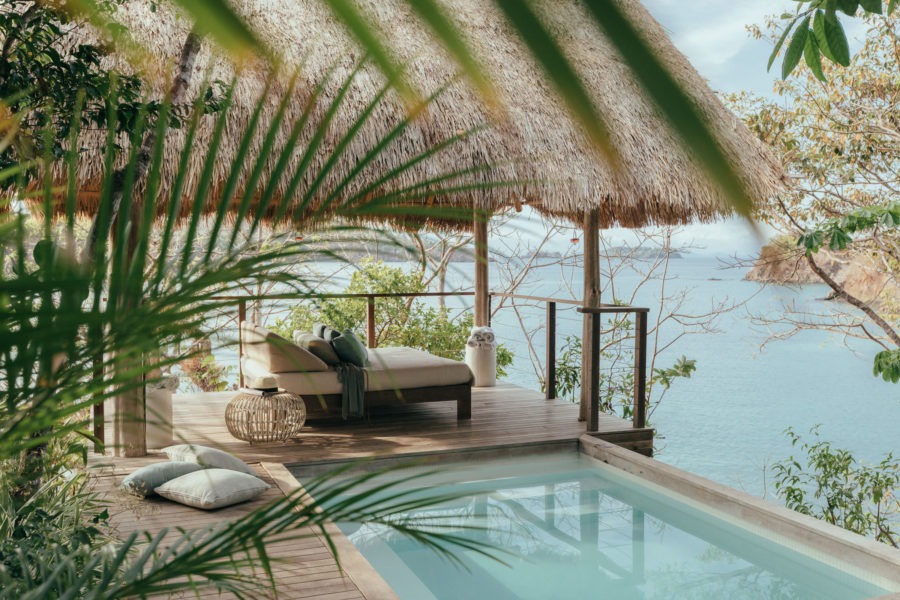
Photo courtesy of Islas Secas
The Islas Secas resort was established in a small archipelago off the Pacific coast of Panama. The resort consists of 14 private islands, seven Casita sites, two villa luxury housing sites, and a solar-powered facility housing a library, bar, and an open-air dining pavilion.
The resort is committed to being eco-friendly, using 100% solar-generated energy, reusing 100% of wastewater for irrigation, and composting 100% of food waste into fertilizer. The resort also only occupies 25% of the archipelago, with the rest remaining undeveloped and left to nature.
9. Monteverde Inn, Monteverde, Costa Rica
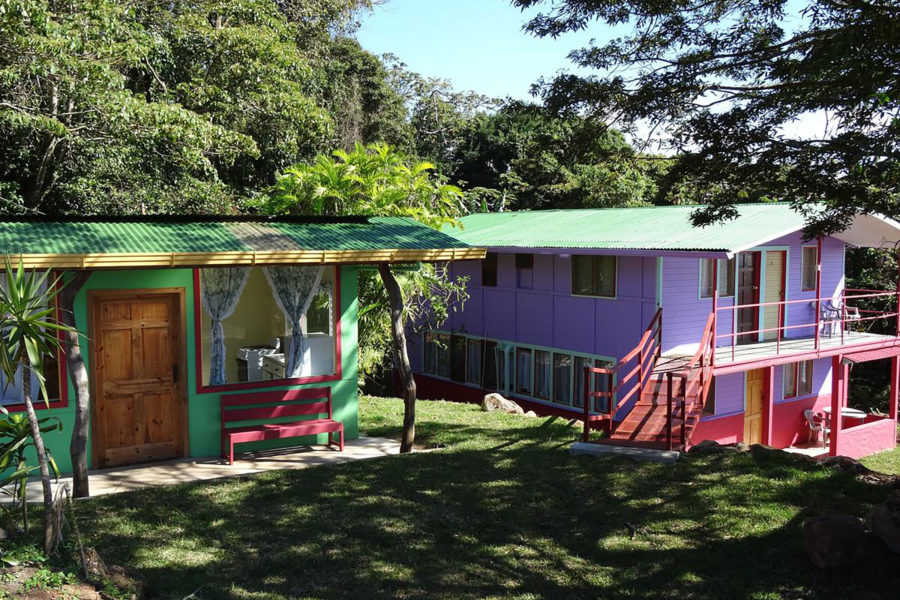
Photo courtesy of Monteverde Inn
In the hills of Costa Rica the Monteverde Inn‘s goal is to have its guests learn about the importance of permaculture and sustainability. Permaculture is a natural resource management methodology that focuses on catching, storing, and using energy and later returning it to nature in an enriched state.
The hotel itself implements a number of sustainable practices. The heating and drying is all provided by solar energy. Water from sinks, showers, laundry, and kitchens is recycled and reused, while rainwater is collected for irrigation use. Cleaning products such as soaps and detergents are made with biodegradable and eco-friendly materials.
10. Lefay Resort & Spa, Lago Di Garda, Italy
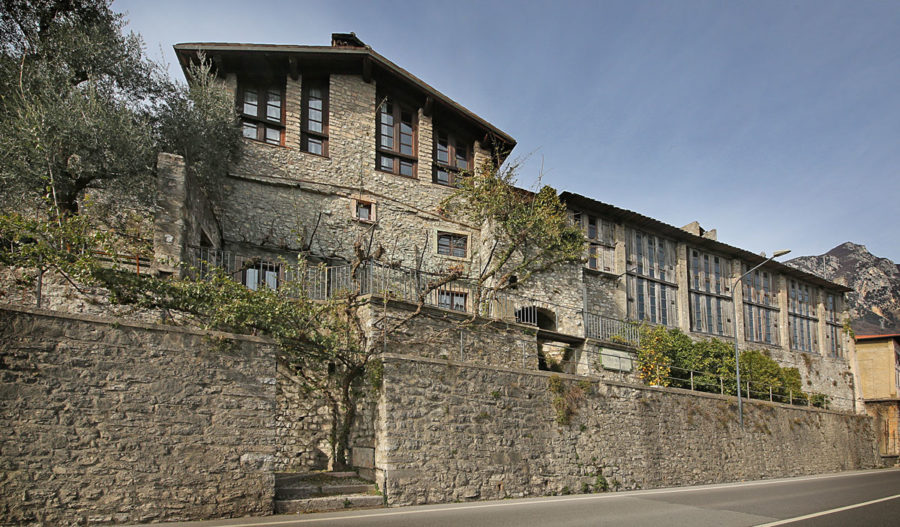
Photo courtesy of Lefay Resort
The Lefay Resort & Spa in Italy is an eco-resort with low impact on the environment and respect for local traditions and nature. It is the first southern European hotel to obtain the Green Globe environmental certification.
One of the main focuses of the hotel’s sustainability practices is reducing its consumption of thermal energy. This is all due to a power plant behind the resort containing systems for producing electricity, heat, and air conditioning using renewable energy sources, including a biomass system, a microturbine CHP plant, and an absorption cooling plant. The biomass system uses local wood to provide 70% of the facility’s heating, while the absorption cooling plant produces 75% of its cooling.
As water shortages in the summer are an issue for the region, the Lefay Resort reduces its consumption of water by using different systems for different needs. A rainwater collection tank is used for irrigation. Toilets and bathtubs that reduce consumption are also used. The swimming pools have a water refilling system that works based on the amount of people in the pool.
11. Karaya Blue, Providenciales, Turks and Caicos
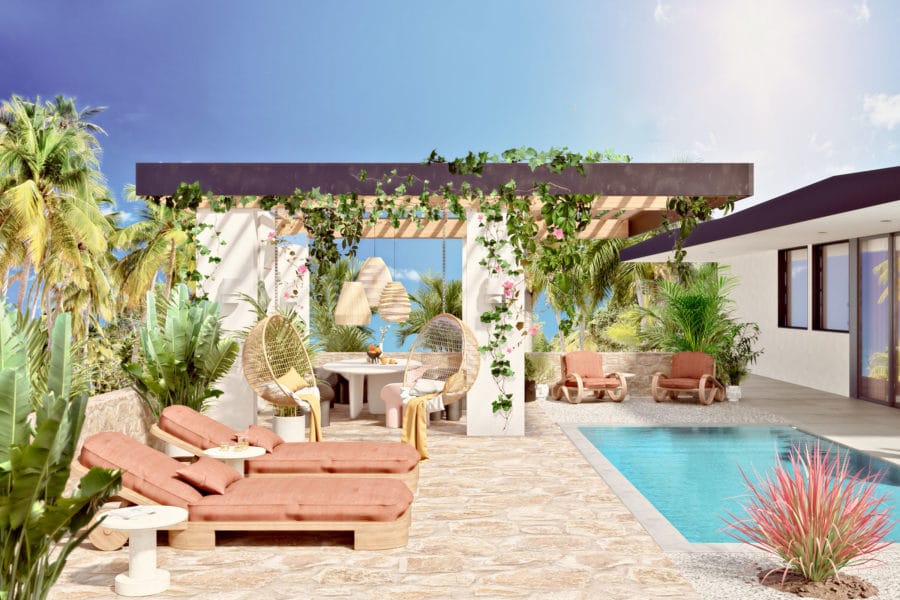
Photo courtesy of Orior
Latitude 22, with help from partners Orior and Renu Energy, designed the micro-development resort Karaya Blue.
Each resort villa is outfitted with integrated solar electrical systems and an advanced water catchment and recycling system. They also include a home vehicle charger for the included eMoke, Polaris GEM e4, or Tesla Model 3 available in the villa.
12. B3 Hotel, Bogotá, Colombia
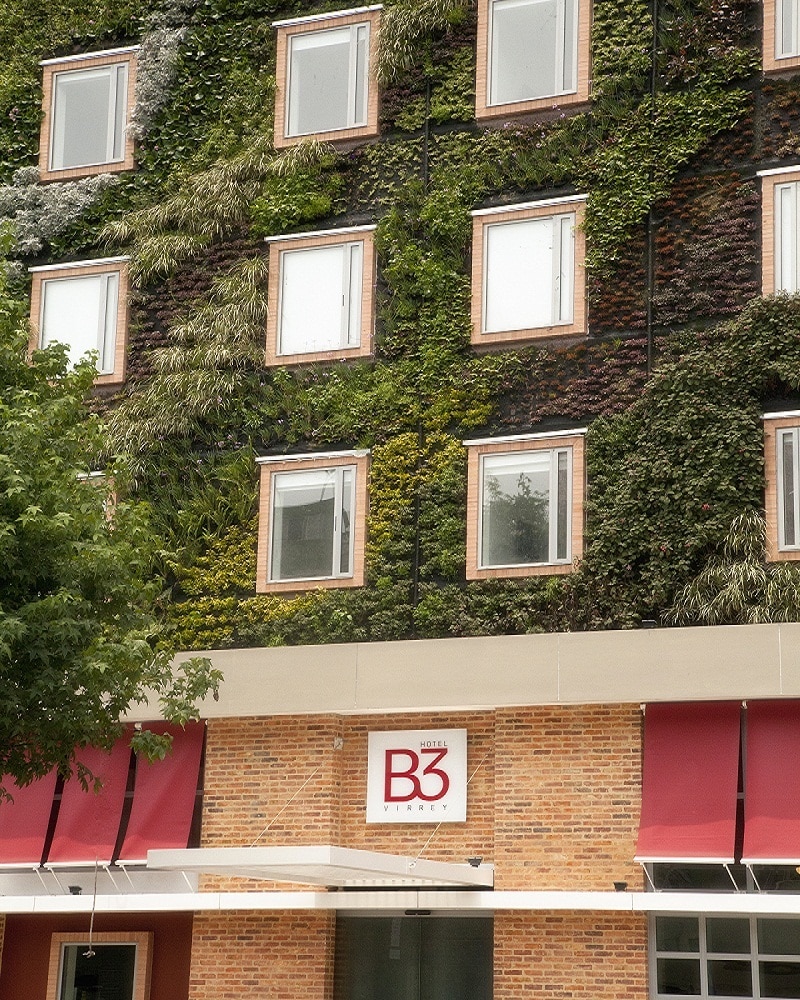
Photo courtesy of B3 Hotel
The B3 hotel is one of many examples of how Bogotá’s image is changing. Green hotels and green lodging options are becoming more common in cities around the world, and the capital of Colombia is no exception.
The B3 hotel is famous for its vertical garden with 25,000 plants on the building’s exterior. The hotel also encourages its guests to borrow bicycles to travel and has eliminated often unused amenities like mini bars in an effort to save energy.
Rafael Picó contributed to this article.

